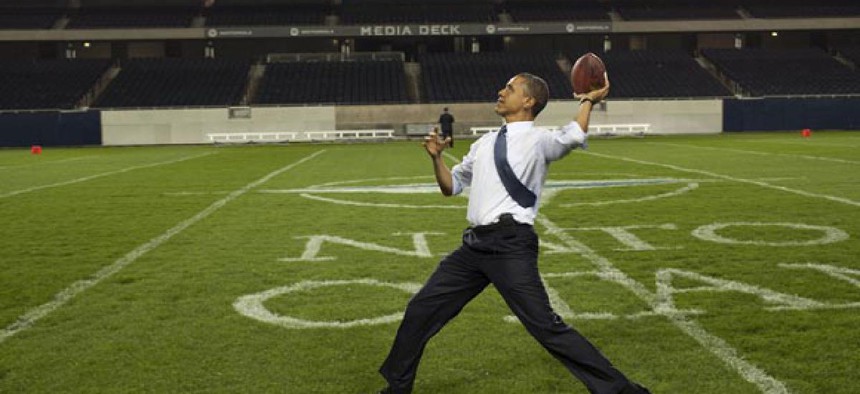
White House photo
At a presidential campaign forum in 2008, then-candidate Barack Obama lamented “the loss of a civic culture in Washington.” The situation, he said, had “led to not only well-known disasters, like the mismanagement of the [Hurricane] Katrina situation, but quiet disasters, where you’ve got entire agencies that have been hollowed out and you’ve got political appointees who aren’t concerned with the mission of those organizations.”
While declaring a need for “house cleaning,” Obama also noted the federal government’s accomplishments in areas such as civil rights, interstate highways and national parks. “So part of my job, I think, as president,” he declared, “is to make government cool again.”
How has that worked out for you, Mr. President?
Of course, it’s not entirely Obama’s fault that the image of Washington, its political leadership and the civil servants who manage federal operations on a day-to-day basis has, if anything, deteriorated since his campaign pledge. In the midst of an at-best sluggish economic recovery and burgeoning budget deficits, it seems clear most Americans think the federal government is anything but cool.
Obama’s declaration in June that the private sector was “doing fine,” and that it was the public sector that needed assistance in the form of more government hiring, didn’t play well. Voters apparently aren’t in a mood to be sympathetic to the plight of the civil servant. Indeed, they went to the polls in large numbers in Wisconsin to back Republican Gov. Scott Walker in his effort to stave off a recall campaign that originated when he provoked outrage by scaling back public employee bargaining rights. And in San Diego and San Jose, Calif., they backed initiatives to trim local employees’ retirement packages.
At the federal level, of course, employees have endured a two-year pay freeze and ongoing efforts to scale back their own retirement benefits. They, too, are disinclined to view their employer as cool these days—though they are still, on the whole, highly committed to the missions of the agencies where they work.
Even if Obama hasn’t succeeded in his coolness objective, how has he performed as chief executive? His lack of experience running large organizations was an issue in 2008.
Obama said on the campaign trail that he wasn’t in the race to become “operating officer” of the executive branch. “Some in this debate around experience seem to think the job of president is to go in and run some bureaucracy,” he told a Nevada newspaper. “Well, that’s not my job. My job is to set a vision of ‘here’s where the bureaucracy needs to go.’ ”
In our cover story this month, Charlie Clark examines how Obama set that vision and just how much he has learned on the job about leading the executive branch in his first term. Many observers say he has faced a steep learning curve, while others note management accomplishments ranging from improving efficiency of information technology operations to cutting improper federal payments to wading into the perilous waters of reorganizing federal agencies.
Maybe coolness will come in a second term.
Whether Obama gets one, of course, will be up to the voters. In the September issue of Government Executive, we’ll take an in-depth look at the management style and approach to government of Obama’s opponent in the race to lead the executive branch for the next four years—former Massachusetts Gov. Mitt Romney.
NEXT STORY: Open and Shut







